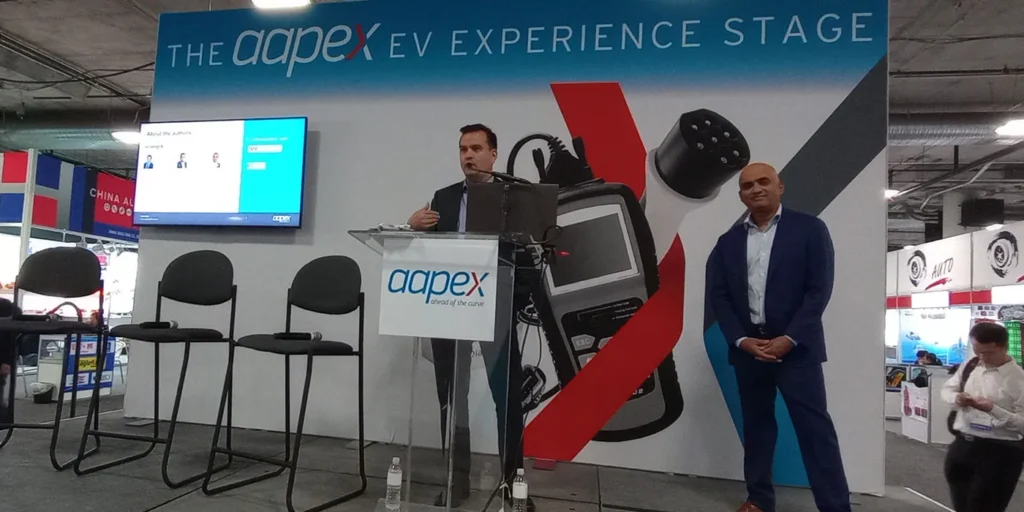Joint EV Trends and Outlook Forecast: BEV sales could reach up to 35% by 2030, 60% by 2035
Wednesday, November 01, 2023

Joint EV Trends and Outlook Forecast: BEV sales could reach up to 35% by 2030, 60% by 2035
At a packed, standing-room-only presentation held at the AAPEX EV Experience Stage, the Auto Care Association and MEMA discussed the findings of their 2023 Joint EV Trends and Outlook Forecast. According to remarks by Carlos Thimann, partner, and Kunal Arora, director, at Strategy&, part of the PwC Network, EV sales in the new-car market have reached 9% in 2023 and are expected to grow up to 35% by 2030. Despite the growth, EVs still represent less than 1% of the overall car parc and are expected to grow to 10% by 2030.
The four key drivers of EV adoption include total cost of ownership by consumers, regulation, supply-side issues (availability of models) and consumer behavior. These factors play a crucial role in determining the pace at which EVs will penetrate the market.
“We expect a parity of EVs compared to ICE vehicles to come [at] about 2026, 2027,” Arora noted. “The primary driver is the total cost of ownership realized by the consumers… However, regulation plays a key role, especially in the initial stages for the adoption as we are seeing the incentives, the EV mandates being put out by the cities.”
In regard to the aftermarket, Thimann explained, “We are expecting the overall aftermarket size to be $418 million today; growing up to $505 billion by 2030.” This significant growth will largely be driven by the introduction of new parts and technologies associated with EVs. Arora further noted that, “OEMs have announced over 170 new EV nameplates by 2030, which is crazy, but that’s a fact.”
The parts market, representing 50% of the aftermarket, will see significant changes with the introduction of new components and technologies for EVs. New parts, including those related to electrification and Advanced Driver-Assistance Systems (ADAS), will be introduced to the market, impacting pricing and inflationary components. The study identified around 190 parts grouped into 81 product categories that will be affected by the shift to EVs.
“We obviously see electrification components and ADAS components being the ones that are going to be growing at a faster space; they start growing really beyond 2030,” Thimann noted. “The rest of the component categories are going to be pretty flat beyond 2030. The ones that are more akin to ICE vehicles start declining slightly. [But], the composition of the car is still going to be heavily ICE throughout most of this period.”
The service segment also will have to adapt to new hardware and software requirements.
“How should service shops react to this?” Thimann asked during the presentation. “Anything related to the battery, the battery lifecycle, battery maintenance, maybe battery swaps [and] the 300-volt battery environment could be something that service shops will start to play a role in.”
Click here to read the full Joint EV Trends and Outlook Forecast.
